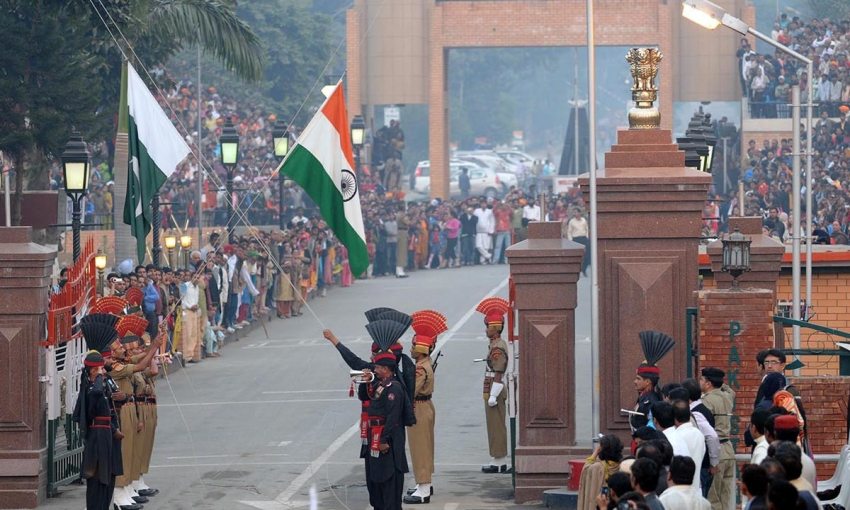With Twitter-loving Donald J Trump and Narendra Modi in power in the US and India respectively, there’s little hope for peace and stability. Afghanistan has been America’s Achilles’ heel more than before while India finds an opportunity in the instability.
Despite the clash of interests, Washington and Delhi are eager to join hands. Without better India-Pakistan relations, imagination of peace in Afghanistan is nothing but a futile exercise. Every September, the UN General Assembly convenes a summit session with noble hope in search for common ground. For South-Central Asia, the 2017 congregation was marked by a diplomatic face-off.
India’s Prime Minister Modi skipped the UN General Assembly session and dispatched the foreign minister not only to evade a chance meeting or handshake with his Pakistani counterpart but also to rebut his expected comments on sponsoring terrorism and human rights abuses in Jammu Kashmir from the same podium. After his maiden speech in which Abbasi called out India on ‘state-sponsored terrorism’, India’s foreign minister Sushma Swaraj spoke after him in order of protocol and used the podium to spit fire.
“Pakistan is recognized only as the pre-eminent export factory for terror,” asserted India’s top diplomat and BJP-led government’s most vicious minister who has a background in the youth wing of extremist Rashtriya Swayamsevak Sangh (RSS).
India’s renewed urge to hyphenate with Pakistan on global fora is so vivid that Sushma allocated two-thirds of her speech to attack Islamabad. As for sponsoring terrorism, she expressed sympathy with the Baloch insurgents in the garb of highlighting their ‘human rights abuse.’ The difference between Jammu and Kashmir dispute and marginal Baloch insurgency is that of a 747 jumbo jet and a paper plane.
Dr Maleeha Lodhi, Pakistan’s Permanent Representative at the UN, in her right to reply declared India to be the mother of terrorism. Her response sounded like music for Kashmiris along both sides of the Line of Control as well as across the world.
For observers of international affairs, the exchange was a reminder of worsening tensions between the two nuclear-armed neighbors. Righter after the UNGA, the US Secretary of Defense set out to India in bid to sell some drone technology as well as advise Delhi not to use Afghan soil to settle scores with Pakistan.
India-Pakistan tensions have been rising in the wake of newer dimensions being added to the dynamics in recent years, namely Delhi’s all-out support to Afghanistan against Islamabad, explicit material and diplomatic support to Baloch separatists, threats to trashing the Indus Water Treaty and opposition to China’s development of economic corridor.
Rephrasing Premier Modi’s own words, Delhi wants to isolate and declare Islamabad a ‘global sponsor of terrorism’ while herself supporting insurgency in Balochistan. Pakistan not only seeks a similar designation for India but also the appointment of a UN Special Representative on Jammu & Kashmir, which has been on the UN Security Council agenda since 1948. With the election of Trump to the White House and Modi holding the fort in India’s Prime Minister Office, the trajectory of bilateral relations continues to move southwards.
Stalled India-Pakistan peace process
After the Mumbai terror incident in July 2008, the two sides agreed in September to revive the composite dialogue but scheduling problems along with Delhi’s conditionalities proved non-starters.
Though prior to Mumbai incident, the composite dialogue process remained largely fruitless. Still it offered an avenue for the nuclear-armed rivals to engage. The last attempt to resume the high level talks collapsed on August 25, 2014, after India called off a meeting of its foreign secretary with his Pakistani counterpart.
The Modi government has effectively used his anti-Pakistan approach to whip up Hindu nationalism in state elections and beyond. Islamabad, meanwhile, strengthened its economic ties with Beijing by signing China-Pakistan Economic Corridor.
The move effectively frustrated the BJP-led government’s efforts to isolate Pakistan and received the attention of many countries either becoming part of it or showing interest. Ever since then, a campaign has been afoot to discredit the CPEC for it passed through Gilgit-Baltistan region, which geographically is part of Jammu and Kashmir.
China and the US
Since the Kargil conflict, India has been persistently pursuing stronger relations with the United States while Pakistan remained fraught with internal political turmoil. Come 2017, Delhi is listed amongst the top US arms importers, and boasts excellent business as well as people-to-people relations.
Much of India’s leverage stems from its promise to counter China’s might on behalf of the US. In reality, the policy serves its longstanding urge to neutralize defiant Pakistan. The other facets of India’s policy against Pakistan, meanwhile, range from supporting Tehrik-e-Taliban and al-Qaeda to funding insurgency in Balochistan and igniting sectarian fires in Northern Areas, Punjab and Sindh.
Notwithstanding its recent naval war games – Malabar 2017 – with the US and Japan, there are no takers of India’s capability to challenge the multifaceted power projection of China.
Conversely, the India and US alliance has been countered by Pakistan and China strengthening their geographic, economic and military relations.
The over $60 billion China-Pakistan Economic Corridor is just the beginning of a bond that has enormous potential for further expansion. Gwadar will possibly transform into an energy port linking China and Pakistan with pipeline stretching all the way to the GCC.
Besides, the re-negotiated bilateral Free Trade Agreement assures that both economies don’t undermine each other. Beijing’s intensive support to Islamabad in overcoming its mismanaged and undermined power production and supply system can help significantly in overcoming the trade deficit. The Pakistan-China bond deters US-India partnership that undermines regional stability.
The US and China factors have already become one of the main irritants in normalization of Pakistan and India.
Hindutva, Kashmir and Indus Water Treaty
Pakistan-India bilateral ties are beset by not only Delhi’s renewed fantasies of power projection and regional domination but also what lies at its core: the ideology of Hindutva. The RSS-inspired and trained youth of the 1970s has taken the reins of power in much of India’s powerhouses.
Modi has been perpetuating the hold by picking younger and hardcore lieutenants. The ambitious tea boy from Gujarat aspires to win a second term in the PMO, which seems pretty likely if he does not top his previous blunder of demonization with a newer one.
Delhi’s ultra-right wing establishment is attempting to bring the concept of greater India to reality. On the horizon is muffling Muslim identity by attacking their way of life. The process is well underway with cow slaughter ban and lynching on mere suspicion of transporting beef.
Businesses of Muslims have been the obvious target in the name of the holy cow. The situation must be read with frequent calls for annihilation of Pakistan through use of force. Not only has Modi personally spoken of blocking rivers flowing from Kashmir to Pakistan but also openly backed Baloch militancy.
Ajit Doval’s statement of fighting Pakistan to the last Afghan sums India’s policy of encircling its eastern rival. Thus, Kabul-Delhi relations have recently been flagged red by Islamabad. Even General Mattis recently concluded visit was aimed at ensuring that Indian actions of arming and financing Taliban must not run counter to Washington’s interests.
The quest for silver lining
Like it or not, the scenario is bleak and the prospects of early resumption of normalization of atmosphere for the secretary level talks could be possible. The trajectory is going southwards. The ‘Operation Arjun’ commonly referred to as surgical strikes sheds light on how precarious the ground realities are.
India has acknowledged that it carried out the operation of targeting Kashmiri and Pakistani civilians and military officers, former and serving, through light and medium range weapons along the working boundary and the Line of Control.
As per the Pakistani officials, Indian military violated the LoC and WB over 872 times in 2017 alone, claiming the lives of 40 civilians and injuring 148 others.
The cross border attacks against Pakistan military posts and civilians along the Jammu and Kashmir dividing line rested at 382. Sans engagement of diplomatic channels, the Pakistan military has and would continue to respond in kind. Ambushing each other’s posts or civilians won’t lead to resolution of dispute but to a toxic war.














